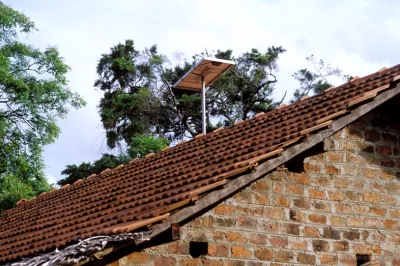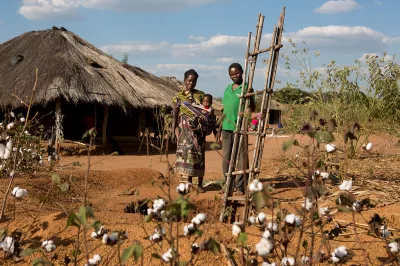Could Energy Service Be the Key to Banking the Rural Poor?
For African banks with a branch-heavy, collateral-heavy mode of banking, low-income customers in rural areas are extremely hard to profitably serve. Research indicates that they can only be 'banked' economically using branchless banking: light on fixed infrastructure and heavily reliant on mobile platforms and agent networks. But perhaps there is another way to reach these customers: by linking financial services more directly and purposefully with critical services, like energy.
In Sub-Saharan Africa, 65% of the total population (and over four fifths of the rural population) do not have access to electricity, while 66% of adults do not have a financial account of any kind. Driving financial inclusion and expanding energy access have traditionally been considered separate development objectives. But thanks to revolutions in the distribution and financing of off-grid solar, that may be about to change.
There is a unique group of companies, such as M KOPA, Fenix International, and Off Grid Electric, who have developed the sales, service, and distribution models necessary to reach lower-income customers not only with pay-as-you-go (PAYGo) solar energy, but also with financial services. These companies are electrifying the African countryside via the sale of financed solar home systems. Customers acquire a solar unit, making payments via mobile money. When they have a positive balance, they have light. When their balance runs out, the units are shut off remotely.

However, unique businesses present unique issues. Selling financed assets that are paid for over 12-36 months demands a cheap source of lendable funds. With the notable exception of the Commercial Bank of Africa setting up a $10 million debt facility for M-KOPA in Kenya, large African banks have been wary of lending to companies which on-lend to poor people. In addition, most markets in which PAYGo solar operators work have regulatory frameworks which legally prevent non-licensed companies from offering financial services beyond lending their own money. At the moment they can offer additional asset-specific loans, and some have even begun experimenting with cash loans, secured on the solar unit.. So while PAYGo solar operators have proven to be successful in selling their product to lower-income customers, they are limited in their ability to cross-sell other products.
So what we have is a situation in which one group of companies (PAYGo solar providers) has become adept at reaching a large subset of customers, but is limited in the types of service they can legally offer. The other group of companies (local financial institutions) is able to offer a wide range of services to customers, but does not have the infrastructure to economically reach them. In a CGAP working paper produced in close partnership with Persistent Energy Capital, we find that the situation is ripe for collaboration.
What would collaboration look like? There are a few basic options:
- financial institutions could develop a clean energy affiliate, whose products are financed via loans from the FI;
- we could see a solar provider expand the financial services they offer the customer by acquiring a banking license; or
- the simplest approach might be for two existing companies to partner and combine their respective competencies. In this scenario a PAYGo solar operator could make sales in the field, conduct a credit assessment, and underwrite a loan issued by a local bank. The energy company would make a cash sale to the bank, who would then collect monthly payments from the customer.
Combining energy and financial services offers a number of advantages. First, having access to a low-cost source of financing (savings deposits) would allow solar companies to grow more quickly and profitably than is currently possible.
Second, FIs would be able to access a customer segment they currently cannot reach, with a unique form of collateral. The lockout technology which encourages customers to make regular solar payments could be used on all manner of financial products, including education loans or insurance premiums. And once a FI is able to gather regular data from its solar customers, it can transition them into regular bank customers, thereby maximizing the value of the distribution channel that the PAYGo operator has established.
Lastly, for the customer such a collaboration would be life changing. Large African banks have been reluctant to shift to low-income, branchless banking. It is a completely new business model, and the perceived risk is huge. By tying loan repayment to product usage, that risk is largely dispelled; it's the old razor and blades model, in one product. For these reasons and others, financial institutions that are nervous about banking the poor might do well to follow the light.




Add new comment